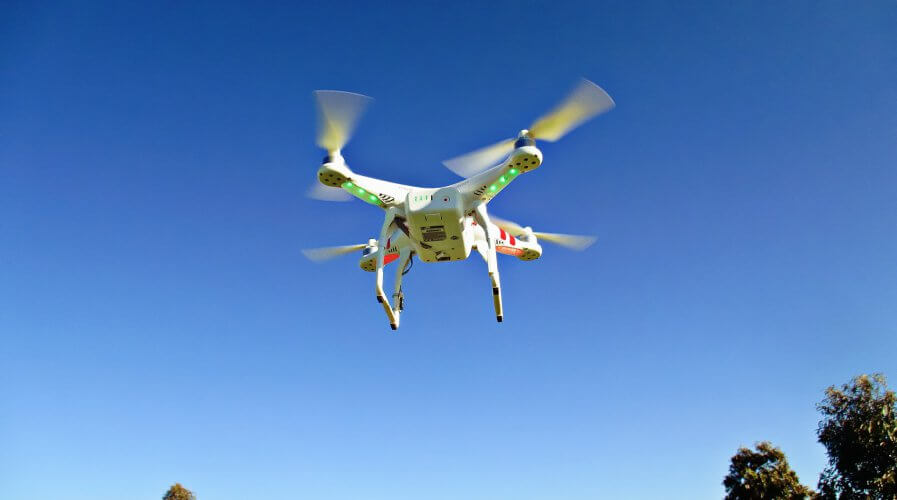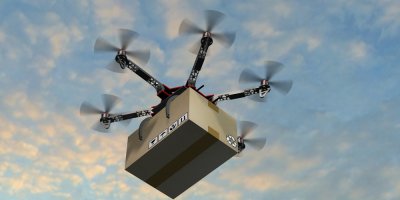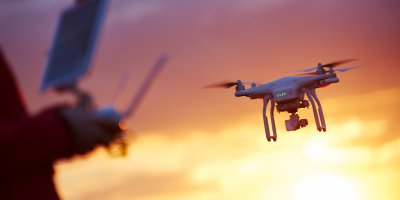
Drones are being used by smuggling rings to transport contraband across borders. Source: Pixabay.
Could rogue drone users ruin it for legitimate businesses?
THERE’s a very real threat facing not just drone hobbyists but companies looking to use unmanned aerial vehicles (UAVs) for business: criminal drone users.
Drones, having become a victim of its own growing popularity, are now being used increasingly for all the wrong (and criminal reasons), that is, as a tool to deliver contraband and potentially, as security experts have warned, to carry out terror attacks.
There have been numerous reports of illegal drone use. Late last year, what is believed to be the first case of drug smuggling by drone was reported in San Diego county in the US. In the Aug 8 incident, border patrol agents reportedly nabbed a man carrying a bag full of methamphetamine worth US$46,000, which he had allegedly picked up after it was delivered across the border from Mexico.
TCOs now using drones to smuggle drugs over the border? https://t.co/aRRJstvxl4
— Krista Lynn Brown (@wisenaive) April 6, 2018
Closer to home, the first case of cross-border crime by drone was reported in China late last month. According to media reports, customs officials busted a smuggling ring that had illegally transported refurbished iPhones worth up to CNY500 million (US$79.8 million) from Hong Kong to Shenzhen using drones.
State-owned media Legal Daily reported that customs officers seized the goods and arrested 26 suspects involved in the operations.
Eventually all technology will be used to support crime. Criminals are now using drones to smuggle smartphones into China. #drones #technology https://t.co/EAl2evi1Z0
— Eric Clive van Gils (@EcvanGils) April 9, 2018
Since 2013, more companies (for clarification, legal ones) have been looking to use drones for delivering packages. Postal companies from Australia, Switzerland, Germany, Singapore, France, and Ukraine have trial runs underway to test the feasibility drone delivery. Amazon, Alibaba and Rakuten, e-commerce giants in US, China and Japan respectively, are also amongst the first to announce tests using drones for deliveries.
But with reports of smugglers using drones, it becomes very difficult to govern drone usage.
The expectation is that, if drone use for commercial deliveries becomes more commonplace – and it will – it will be tougher for governments and policymakers to formulate regulation governing its usage in a manner that fairly distinguishes between criminal and legal commercial use.
As it stands, drone laws remain relatively obscure, with few countries actually outlining the specifics in terms of rights and policies pertaining to flying or usage of drones. For commercial drone use, the details are scarcer still.
UAV Systems International has a master list of drone laws and according to that list, only 62 countries globally are listed to have such legislation in place.
Of these, 20 are in Asia, namely Bangladesh, Bhutan, Brunei, Cambodia, China, Hong Kong, India, Indonesia, Japan, Laos, Malaysia, Mongolia, Myanmar, Nepal, Philippines, Russia, Singapore, South Korea, Thailand, and Vietnam.
Taking a quick look at a few drone laws, it’s evident that there remains little clarity or consensus between countries.
Bangladesh has strict laws, requiring permit and approval before flight. Insurance is required. Strict details on permitted areas of operations, timing and weather of operations, and conditions to adhere to are also listed. There is also an age limit for flying drones in Bangladesh.
Hong Kong highlights specific laws, detailing the purpose of use, area of permitted operation, control parameters, user responsibility, altitude allowed, time of operations, weather conditions. Besides that, commercial users are required to submit an application for approval. Commercial users might be required to have a pilot qualification, in accordance with types of drones used.
India details very strict areas of permitted operations, permitted operation hours and weather conditions, age limit. Drones require a license plate, and users require insurance. Civil operations of unmanned aerial systems will require approval from relevant governmental bodies. India has general rules for traveling with drones as well.
Indonesia has some general laws on the usage of drones. There are guidelines on permitted areas of operations and timing of operations. Permits are required for commercial use.
Malaysia has laws listing areas of permitted operations, allowed operation hours and weather conditions, permitted drone types. For drones above a certain weight, a pilot’s license will also be required, along with approval of flight. Malaysia has rules for traveling with drones as well.
Singapore details laws listing areas of permitted operations, weather conditions, very specific permitted usage, cargos allowed on board a drone. Drones over a certain weight will require drone permits. Singapore also has rules for traveling with drones.
Most drone laws do not, however, detail cross-border usage.
For companies looking to use drones for logistics and delivery, the lack of comprehensive laws in certain countries means less protection against loss of cargo due to interference such as signal jamming.
There is also limited protection if a drone has been hacked and used for smuggling.
But there exist companies that protect against misuse of drones, using what is known as anti-drone solutions. Companies like Drone Defence, Blighter, and Cerbair rely on the use of surveillance, identification and signal jamming to protect against misuse.
However, most of these solutions are custom-made for organizations, making this a hefty investment for any company embarking on these ventures.
Drones are useful, especially when transporting goods to areas with less access for conventional transportation. However, until laws are ironed out, drone-based logistics systems could remain in trial run for a long time.
READ MORE
- Strategies for Democratizing GenAI
- The criticality of endpoint management in cybersecurity and operations
- Ethical AI: The renewed importance of safeguarding data and customer privacy in Generative AI applications
- How Japan balances AI-driven opportunities with cybersecurity needs
- Deploying SASE: Benchmarking your approach




